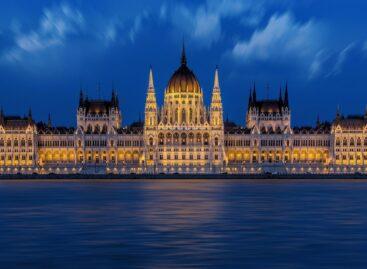GKI: What does a foreign tourist mean to us?
The role of tourism in Hungary has grown significantly over the past fifteen years. The number of days spent by foreigners in Hungary increased from 95.7 million days in 2010 to 138.5 million days (+44.7%) at its peak in 2019, and was still above 115 million in 2024 (+20%). In addition, it is worth examining tourism to Hungary in more depth, as they also increase GDP through their spending (2024: HUF 2,945 billion, Central Statistical Office). At least half of the added value of the tourism sector, which accounts for 6.5% of GDP (Central Statistical Office), is linked to foreign tourists.
Foreigners arriving for several days spent a total of 77.5 million days in our country in 2024 during 13 million trips. However, the average length of stay decreased: from 6.9 days in 2010 to 5.9 days. This is due to low transport and accommodation costs; as outbound travel has become cheaper, tourists are also committing to shorter trips. In general, it can be said that the number of trips, the time spent here, and the spending of tourists gradually increased until 2019. There was a significant decline during the coronavirus pandemic, and then inbound traffic gradually increased again. At the same time, the number of guest nights in 2024 still fell short of the peak year of 2019. Despite the fewer guest nights, daily spending increased strongly in real terms, by almost 65%, which is a good indication that our country is becoming less and less cheap for foreigners.
Number of guest nights spent by foreigners in Hungary (million days) and average spending per day in 2010 prices (thousand HUF/day), 2010-2024
It is worth comparing the number of days spent in Hungary by foreigners arriving for several days with the number of guest nights. Guest nights only include official hotels, guesthouses, and Airbnbs, but do not include stays with family, friends, or in domestic properties owned by foreigners, which is crucial, since accommodation accounts for almost half of expenditures (KSH). Comparing these, we see that in 2024, the total number of guest nights spent by foreigners in commercial accommodation was 22.6 million (KSH), which is barely 29% of the total number of days spent in Hungary by foreigners arriving for more than 1 day (77.5 million). It can be seen that more than 70% of the days spent are spent in non-commercial accommodation.
The distribution of tourist destinations within the country remains quite uneven. Budapest’s share was 42% in 2010, which jumped to 52% by 2024. Western Transdanubia also has a significant share (but significantly lower than in previous years) (2024: 14.6%), while the Balaton region was able to maintain its weight (2024: 11.2%). Thus, three quarters of foreign tourism is directed to these three regions.
Related news
The 2024 tourism record was achieved in 11 months this year
🎧 Hallgasd a cikket: Lejátszás Szünet Folytatás Leállítás Nyelv: Auto…
Read more >A new era in Budapest’s tourism management: the capital’s TDM model is transforming
🎧 Hallgasd a cikket: Lejátszás Szünet Folytatás Leállítás Nyelv: Auto…
Read more >Five critical mistakes that Hungarian companies still make when it comes to business travel
🎧 Hallgasd a cikket: Lejátszás Szünet Folytatás Leállítás Nyelv: Auto…
Read more >Related news
Cautious consolidation on the market after a demand-driven period
🎧 Hallgasd a cikket: Lejátszás Szünet Folytatás Leállítás Nyelv: Auto…
Read more >Ice cream as a season-extending product
🎧 Hallgasd a cikket: Lejátszás Szünet Folytatás Leállítás Nyelv: Auto…
Read more >The stars were shining bright
🎧 Hallgasd a cikket: Lejátszás Szünet Folytatás Leállítás Nyelv: Auto…
Read more >







